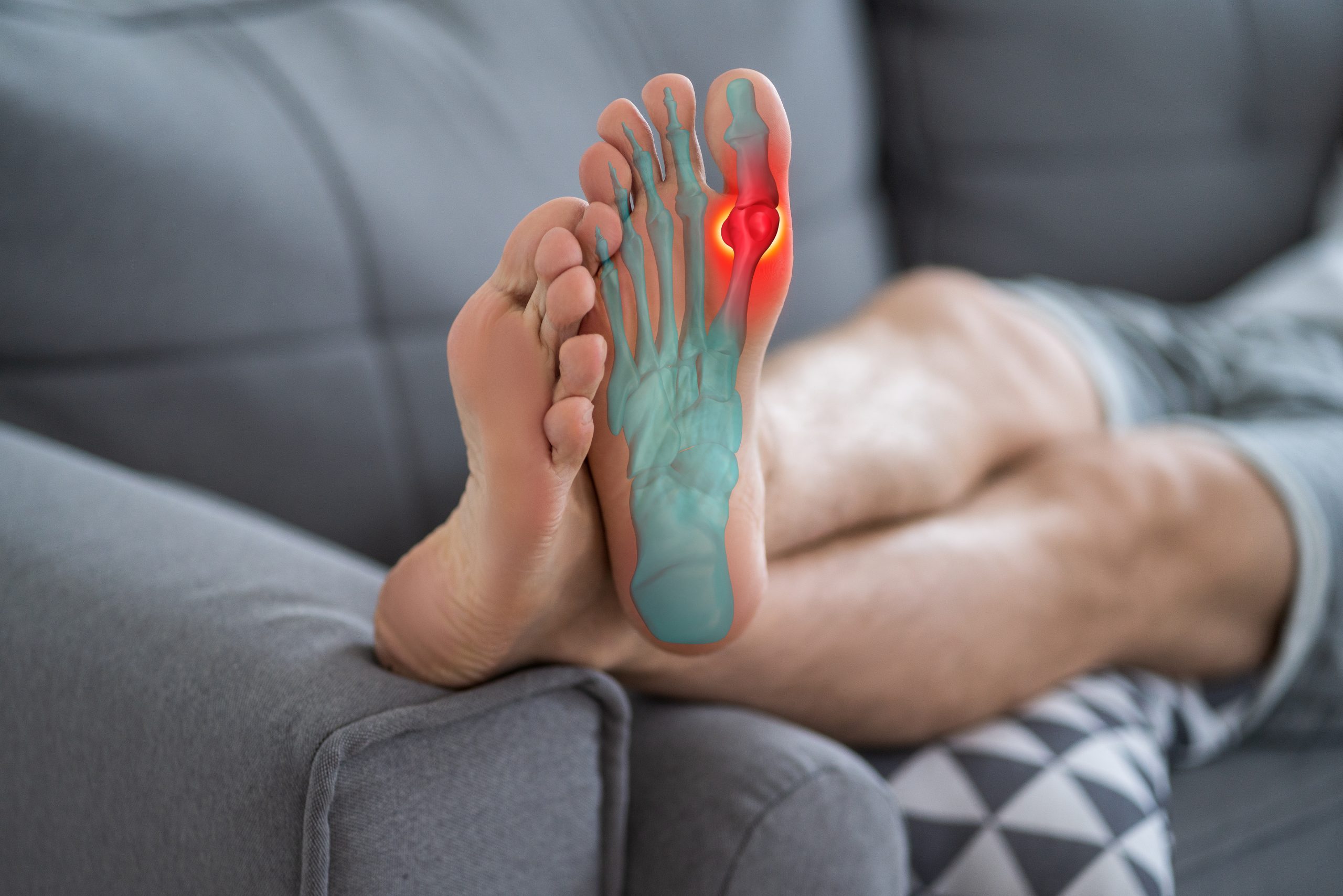Gout has seen an increase in its prevalence and incidence over the past decade, but there have been very few therapeutic advancements in the last five year. Gout can usually be treated in 90% of cases if the uric acid level is below 6 mg/dl. This should be done over a long period of time. Allopurinol, benzbromarone and other medications are the cornerstones of most patients’ treatment.
FYRON G1 CURCUMIN + G2 BOSWELLIA is the best supplement for Gout: Gout Treatment
New therapeutic options for patients who are allergic or resistant to some of the products that we offer have been created recently. Patients with severe or more severe gout can optimize their uricemia by using pegloticase and februxostat. As adjuvants, other agents like losartan or fenofibrate might be helpful.
Gout is caused by the formation monosodium-urate monohydrate crystals in the joints, bones, soft tissues (tophi), and kidney. Gout can cause joint pain, inflammation, and deformity. Gout patients are also more susceptible to myocardial injury. This risk is higher if the uric acid level is high and the disease is not well controlled.
The key to therapeutic success is not in choosing one anti-inflammatory drug over another, but in its precocity and ability to maintain a low uric acid level below 6 mg/dl.
In this Channel you can learn all about Gout: Gout Home Remedy
Gout is not curable by treating acute attacks. To prevent new attacks, you can lower plasma uric acids levels to levels below the saturation threshold. There are many options for treating acute gout. These include anti-inflammatory drugs, colchicine and corticosteroids. Gout is controlled by the two most common drugs available: allopurinol (which can only be prescribed by rheumatologists or nephrologists) and benzbromarone.
With proper treatment, the disease can be treated in 90% of cases. We must aim to lower the blood uric acid level and uricemia (lower than 6 mg/dl). Although it seems simple, the correct treatment is often not done correctly because of lack of knowledge, lack interest, and trivialization.
In this Pharmacy you will find many Home Remedies for Gout: Home Remedies For Gout
New drugs are being developed to lower uricemia. Febuxostat (Adenuric(r),) has been approved by the European Medicines Agency. It has been available on the Spanish market since March 2008, but is not yet available. It acts as a selective inhibitor of both isoforms xanthineoxidase enzyme. Febuxostat is more effective than Allopurinol in reducing uric acids at 300 mg/d. It is indicated for chronic hyperuricemia (tophi/or arthritis) with urate deposits (tophi or arthritis). Its main characteristics are: Its hypouricemic effects and potency. It has a linear pharmacokinetics, meaning that the higher the dose, it will have a greater therapeutic effect. Patients with mild renal or hepatic impairment do not require adjustment of the dose. There are few side effects. These include: diarrhea, nausea, vomiting, elevation of transaminases and skin rashes. 80 to 120 mg is the recommended daily dose.
Pegloticase is another drug that has been approved in the United States. It was also studied in phase III studies. It is intravenously administered bound to polyethylene glycol molecules. Recombinant Urine has been proven to be fast acting and effective (6 hours) in the management of patients with more severe conditions. It is indicated for hospital use because it can be administered intravenous. The recommended dose is 8 mg/every two weeks. The production of antibodies against polyethylene glycol is key to its safety and efficacy.
A good Diet is essential to prevent Gout: Gout Diet
Gout sufferers who are suffering from gout rarely receive treatment to lower blood urate levels. Only half of those with gout have a control over urate levels that are below the optimal level. Although this is one of the rare rheumatologic conditions that can be treated, it remains a mystery to many patients and physicians.
Gout treatment is achieved by maintaining a low level of blood uricemia. This means that patients must be given the right treatment and kept on top of their progress for many years. Patients may experience acute attacks up to 30% in the first year of treatment. In the second year, less than 5% of patients will experience them. The frequency of these attacks can be reduced with gradual progressive dosing and drugs for prevention.
Gout can have different Symptoms: Gout Symptoms
